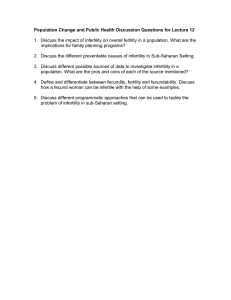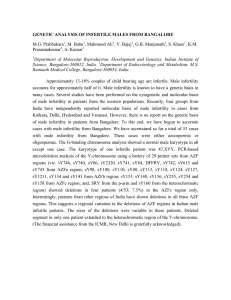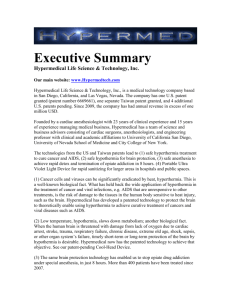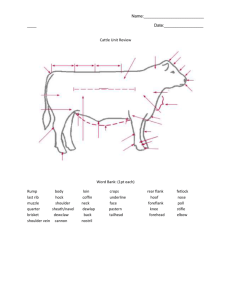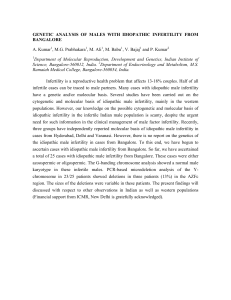Powerpoint
advertisement
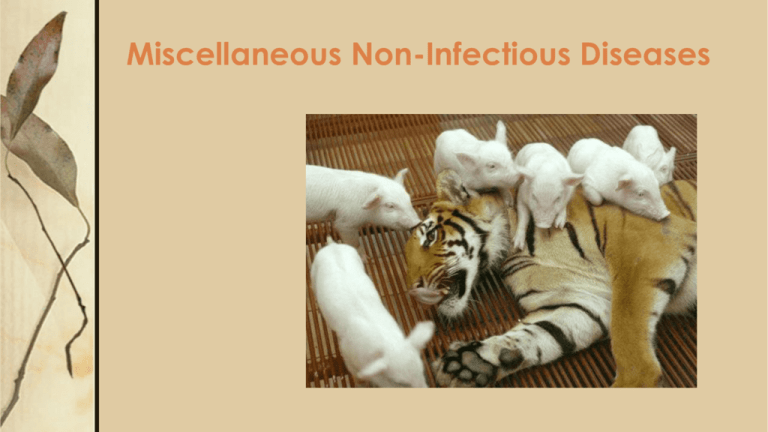
Miscellaneous Non-Infectious Diseases Common Core Standards Addressed! CCSS.ELA-Literacy.RH.9-10.6 Compare the point of view of two or more authors for how they treat the same or similar topics, including which details they include and emphasize in their respective accounts. CCSS.ELA-Literacy.RH.11-12.3 Evaluate various explanations for actions or events and determine which explanation best accords with textual evidence, acknowledging where the text leaves matters uncertain. CCSS.ELA-Literacy.RH.11-12.7 Integrate and evaluate multiple sources of information presented in diverse formats and media (e.g., visually, quantitatively, as well as in words) in order to address a question or solve a problem. Bell Work! Describe three causes of infertility in cows. What is dystocia? Why do you think that a heifer calf born twin to a bull would be infertile? Describe three factors that could cause a female animal to have an abortion. Terms: Adhesion Diagnosis Epidemiology Estrous cycle Gestation Hyperthermia Hypothermia Infertililty Infertility problems The value of a breeding animal is based on its ability to reproduce. Infertility refers to an animals inability to produce offspring. Infertility is both a male and female problem. Some animals such as dairy cows may develops cystic ovaries. This produces a condition where the female will not become pregnant. The animal will exhibit signs of heat but will remain infertile until the cyst is ruptured by hormone treatment or manual rupture of the cyst during palpation. Scar tissue know as adhesions in the female tract can limit movement of the ova and sperm preventing fertilization. Heifers may have normal cycles but fail to breed as a result of hereditary defects. A heifer born twin to a bull is known as a “freemartin” heifer and is seldom fertile. Reproductive Info. Mares are seasonal breeders and infertile except during the breeding season stimulated by increased day light, generally in March. The main reason for infertility in the male is poor semen quality. Poor semen quality may be the result of heat stress, poor nutrition, or diseases of and damage to the testicles. Lameness also inhibits the males ability to breed. When purchasing male breeding stock always have your veterinarian collect a semen sample for testing. Pregnancy Problems Termination of the pregnancy prior to full term birth is known as an “abortion”. Pregnancy problems are often the result of an infection of some type. Nutritional deficiencies may be a problem in stage 1 of the pregnancy. Embryonic and fetal death may be caused by stress, chemical, drugs or by native plants. Dystocia is the term for difficult or impossible birth. Dystocia could be the result of a small birth canal in young females. Abnormal position of the fetus could also be a problem. Hyperthermia Animals subjected to severe heat stress may suffer from “hyperthermia”. (increased body temperature) Inadequate heat loss may affect body functions. Heat stroke and heat exertion can occur in animals, just as it does in man. Cerebral edema may occur following a body temp. of 110 degrees. Hypothermia: “Hypothermia” may result if an animal exposed to extreme cold temperatures for a long period of time. If an animals body temperature falls below 90 degrees symptoms of hypothermia occur. If the body temperature falls below 50 degrees it is generally terminal. Newborn animals are in danger because they will be unable to stand and nurse. Disease Prevention: Poor nutrition can make animals susceptible disease. Rules for nutrition management programs would include the following; ◦ Provide feed with adequate protein, carbohydrates, minerals, vitamins and fats. ◦ Provide adequate high quality forage ◦ Sufficient clean water ◦ Prevent overgrazing ◦ Ensure that newborn animals receive colostrum milk as soon after birth as possible. ◦ Provide shelter with space and ventilation. ◦ Provide shelter from temperature extremes. Prevention of disease transmission: To prevent disease transmission and infection of animals follow these guidelines; ◦ ◦ ◦ ◦ ◦ ◦ ◦ ◦ ◦ If possible raise replacement animals. Purchase clean, tested animals. Test purchased stock before arriving at your facility. Isolate purchased replacements for six weeks. Isolate diseased animals. Control parasites Prevent animal contact. Dispose of diseased and dead animals by burying the carcass. Disinfect tools used for branding, castration , dehorning and vaccination. Vaccinations: To increase the level of immunity of your stock follow these guidelines; Vaccinate breeding stock against venereal diseases. Vaccinate pregnant dams so that new born animals will be resistant to postnatal disease. Vaccinate nursing animals. Vaccinate young animals. Provide booster shots when possible. The End!

